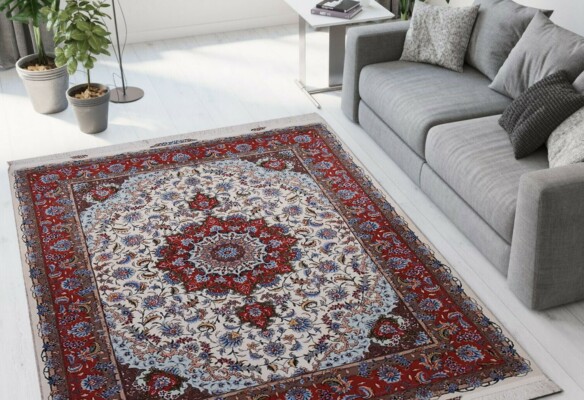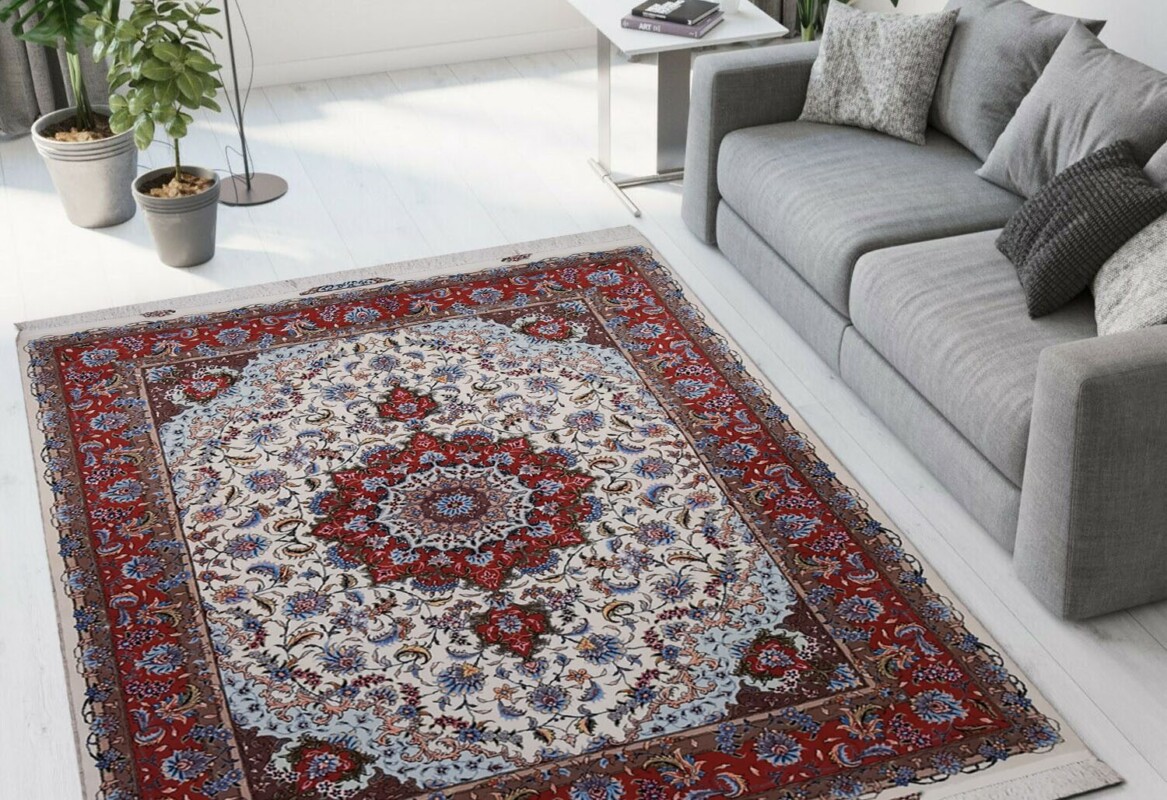Irana Carpets
Tabriz carpets, the world city of carpet knotting
Tabriz carpets, the world city of carpet knotting

Tabriz carpets
are world-famous carpets. Tabriz, a city in western Iran, is known as the “World City of Carpet Knotting.” This title was chosen by the World Craft Council to emphasize the importance of advertising handmade Persian carpets. Rug knotting in Tabriz began before the Safavid era with 24 Raj (the number of knots in 7 centimeters) but later with the improvement of skills, it came to 110 Raj which it considers the finest rug. Tabriz 60 Raj rugs are valued in the market and are more common to find.
The best carpets in Iran come from Tabriz with Turkish knot or ghiordes (symmetrical knot) and double weave. One plot is thick and is usually gray or white in color. It goes back and forth between the warp of the carpet to give it volume. The other is blue or red and is opposite to the first to bind the warp together and give durability to the carpet. Highly skilled craftsmen knot Tabriz rugs with high precision and elegance so much so that ,at times, the finished rug looks like a machine-made rug with no mistakes.
The raw materials of Tabriz carpets are wool, silk and cotton. The warp of
these carpets
is usually cotton which is durable, but in some cases it is possible to find carpets with silk warps that are considered to be the best Persian carpets. The origin of the silk used in these carpets is Khorasan (region in the east of Iran) and Tehran (the capital). The wool comes from Maku, a narrow mountain in northwest Iran.
The design of these carpets is based on old patterns modified according to new tastes. Designs such as historical monuments, floral motifs, boté flower, palmetto flower ( shah abbasi ), hunting scene and stylized motifs are common in Tabriz carpets. The Heriz Tabriz rug is unique and has a stylized geometric design taken from an old pattern. This design retained the old palmette pattern medallions but changed it to a more stylized geometric design that is different from other Tabriz carpets. It is important to remember that the designers of Tabriz rugs are professionals and control the knotting and finishing process with care and attention.
In recent years, Tabriz 60 Raj and 50 Raj carpets with silk flowers have become very popular among carpet lovers , since they have high quality they are in high demand. Colors such as beige for the base and blue, dark red, olive green and magenta for the individual designs that make up the pattern are used to give Tabriz rugs a magnificent appearance. The process of dyeing raw materials for Tabriz carpets is mostly by hand with natural colors.



